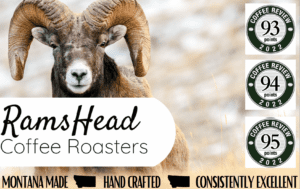Recently I was involved in a couple of tasting programs. One was a roasters’ competition for espresso and another was research for a rural industries organization evaluating coffee cherry maturity on taste quality. In both cases it was necessary to use tasting sheets.
For the cherry maturity tasting, we used the Cup of Excellence® Tasting sheets devised by George Howell. These sheets were a huge leap forward in comparison to the old SCAA cupping sheets which automatically gave the coffees 50% and evaluated only five characteristics. George based this sheet on wine tasting sheets to try and introduce some more sophistication to coffee tasting. There is no doubt he succeeded with this as the SCAA proceeded to modify its very basic form to its current form which is largely based on the COE one.
For the World Barista Championships the tasting forms were originally based around the Italian Espresso Tasters wheel, which I had a hand in adapting for the judges of these competitions.
The trouble with tasting sheets is Heisenberg’s Uncertainty Principle (HUP). It was Tim Castle who pointed out to me in a rather philosophical conversation we were having some years ago about the best coffee tasting sheet being a blank sheet of paper. Although at first it sounds unrealistic, there is actually a lot of sense in this statement.
The reason for this is that in very laymen’s terms, HUP basically means that the very act of measuring something interferes and alters the very thing you are trying to measure and so it is impossible to be accurate. In other words by having prompts on a tasting sheet this will pre-dispose us to think about a coffee in a certain (biased) way. If for instance acidity is not mentioned on a sheet then you can’t evaluate it. The COE tasting sheets introduced sweetness for instance, whereas previously it wasn’t on the SCAA sheet. So suddenly sweetness becomes more important. It could be body or any other characteristic that is affected in a similar way.
For the research project I was responsible for placing a range of coffees from a particular terroir within an international benchmarking configuration: i.e. exactly how the coffees would fit in internationally in relation to all levels: NY Exchange, >70% Specialty Coffee Association >80% or Cup of Excellence >84% whether for drip, plunger or espresso.
These simple bench-marks make it a bit easier for a context without bending your perception too much and most professional cuppers are somewhat familiar with them. Keeping in mind that acidity still tends to be the most defining single characteristic for both Specialty and COE coffees.
While tasting the roasters’ competition I came under fire for not filling out all the boxes. I was aiming to be as consistent as possible but also trying to place the coffees in this international context with more of an emphasis on body rather than acidity. As a result I put a final score of where I believed the coffee sat in an international configuration.
I always insist on no collusion between judges during scoring unlike some barista competitions where there is considerable discussion by judges about their scores behind closed doors. Consequently these barista judges tend to be very uniform and I might add timid, rather than expressive. In COE competitions, new and inexperienced judges tend to be very conservative as they don’t want to stand out on their own in comparison to everyone else. Having all the judges within a narrow range is not necessarily good judging.
I would rather a judge is confident and expresses their view of a coffee, honestly openly and without inhibition as long as they are consistent. If one judge consistently scores low and another consistently scores high it will not make the competition unfair as long as they are consistent. But in the end I tend to agree with Mr Heisenberg: the less interference in the scoring process the better, so to speak anyway.











